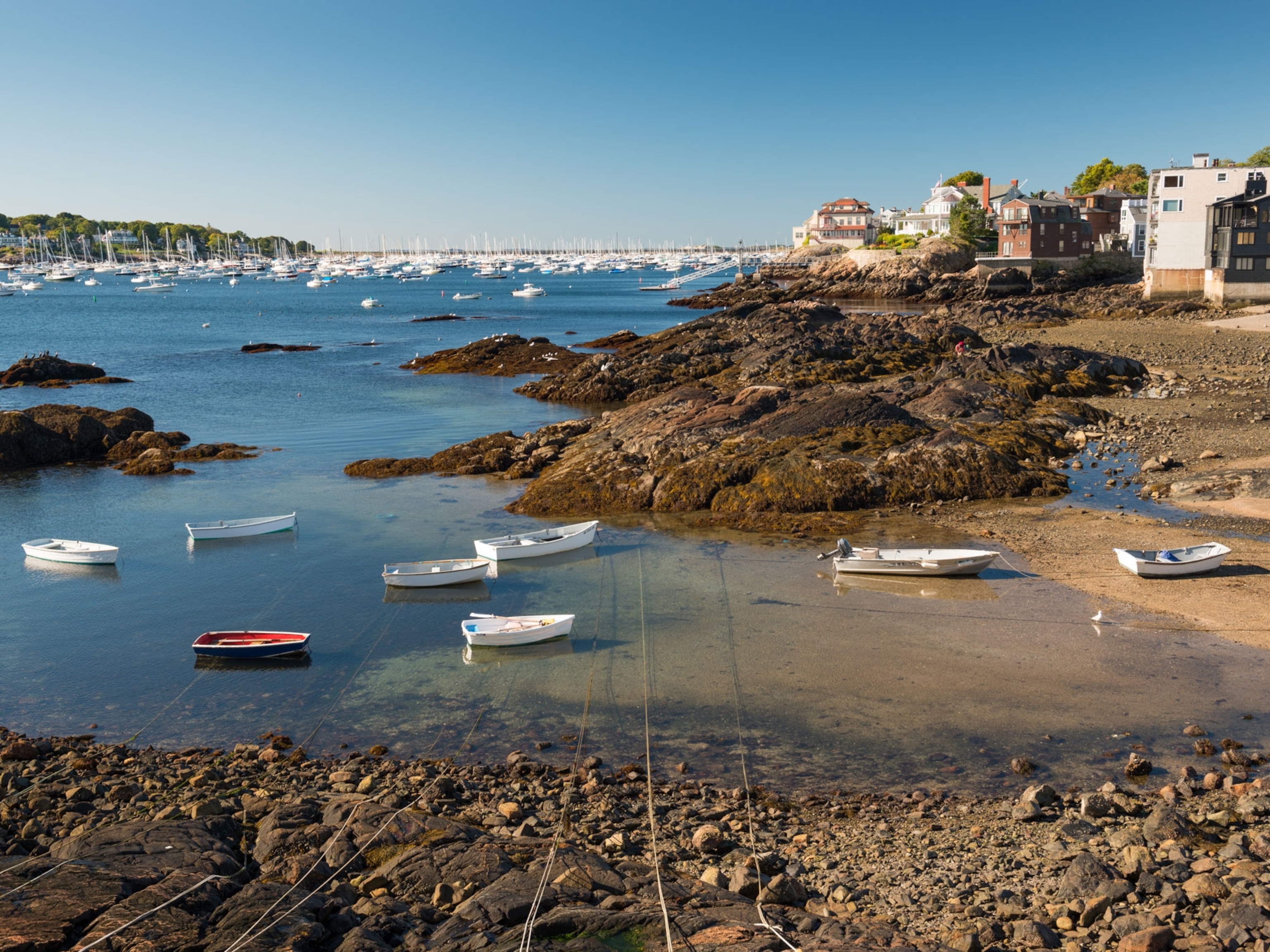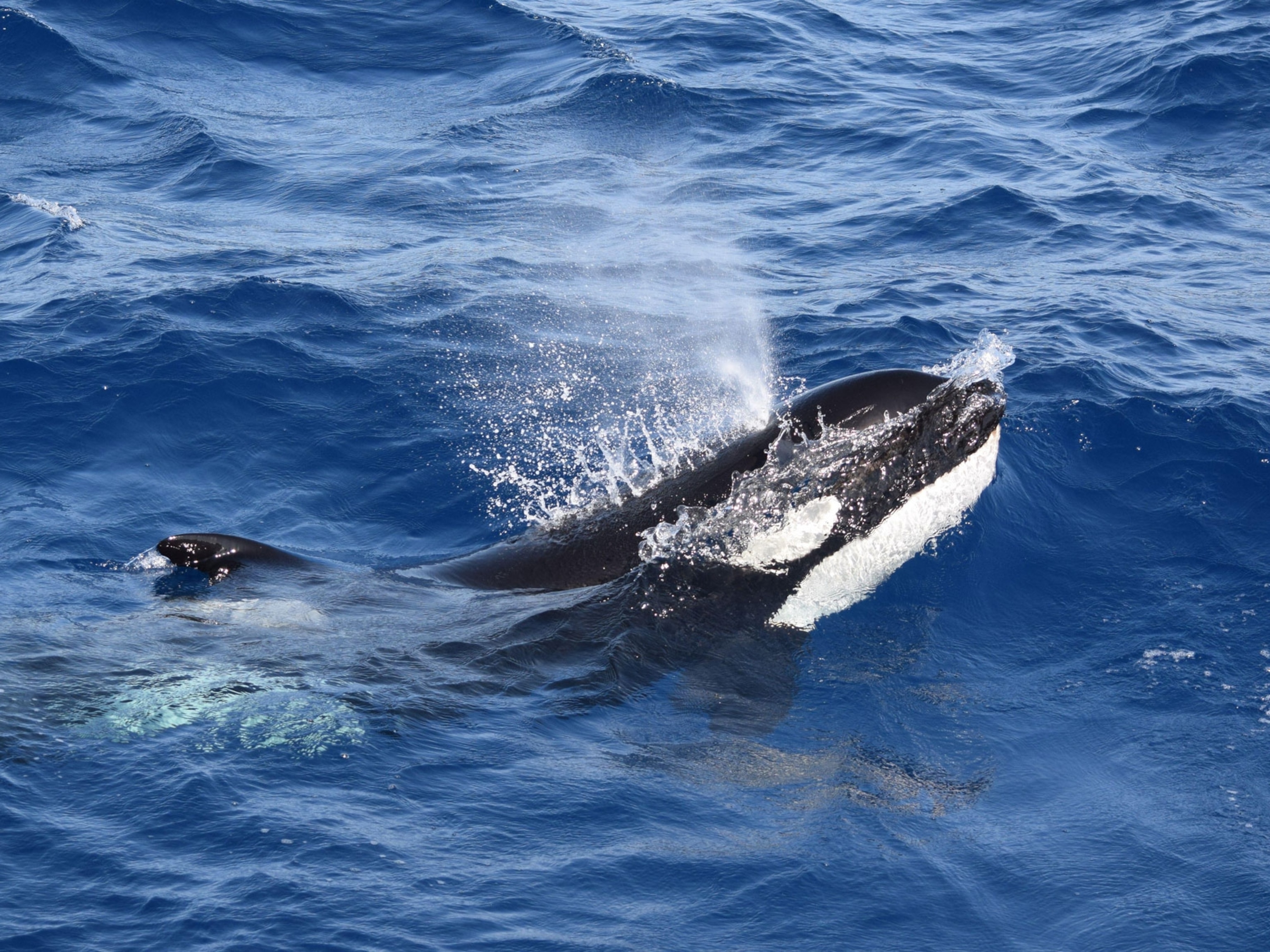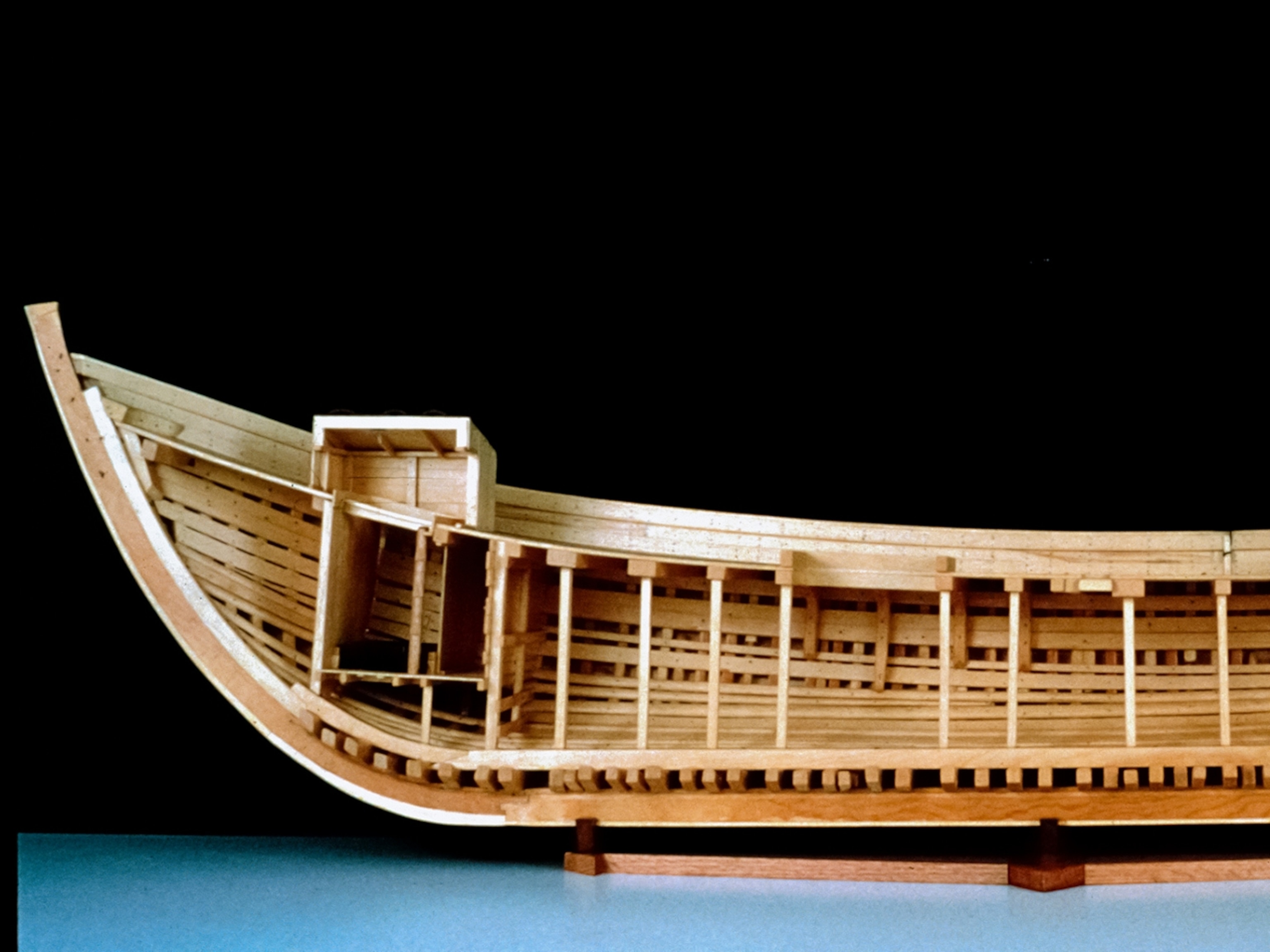
Amid Hunt for Malaysian Plane, Ocean Swims With Missing Vessels
Ships lost at sea often elude current technology.
As satellites and search teams scour the Indian Ocean for signs of the missing Malaysian airliner and its 239 passengers and crew, somewhere in the vast expanses of the North Atlantic an empty Russian cruise ship has been lost for more than a year. And some officials believe they'll never find it.
The MV Lyubov Orlova was last seen adrift off the coast of Newfoundland on February 4, 2013, and if it's still afloat, its next port of call may be the coast of Ireland. Recently, Pim de Rhoodes, the captain of a Belgian salvage vessel that has been searching for the 328-foot Lyubov Orlova, speculated that the ship has a fifty-fifty chance of still being afloat, and if it hasn't sunk, it's likely overrun with starving rats. Unable to resist such a sensational story, the UK's Daily Mail recently ran the headline: "Could this Russian ghost ship infested with CANNIBAL RATS beach in Britain?"
Cannibal rats aside, a 4,000-ton ghost ship presents not only a hazard to shipping but also a serious environmental threat. A massive, unmanned vessel floating aimlessly in the North Atlantic could collide with an offshore oil rig or run aground and leak fuel and other contaminants into the ocean. The mystery of the Lyubov Orlova also brings into focus the broader problem of vessels lost at sea and how frustratingly difficult it is to find them despite the broad array of modern technology at a searcher's disposal.
In better days, the Lyubov Orlova, which was built in Yugoslavia in 1976 and named after a Soviet film star, took wealthy Russian tourists on Arctic cruises, but in 2010 the ship was confiscated in St. Johns, Newfoundland, for failure to pay two years' worth of port bills. It was sold at auction for $275,000 in February 2012, then towed out of St. Johns by an American tug en route to the Dominican Republic, where it was to be scrapped.
Within a day, the towline snapped, and the Lyubov Orlova went adrift. The Canadian Coast Guard determined that the derelict ship posed a threat to Newfoundland's offshore oil rigs and monitored its position over the next week. Eventually, a vessel was able to secure the ship and tow it into international waters. Confident that prevailing winds and currents would direct the Lyubov Orlova into the open ocean, where it could do no immediate harm, Canadian authorities ordered the ship released. It hasn't been seen since.
Chris Reynolds, director of the Irish Coast Guard, was notified about the abandoned ship a week later. "We weren't overly concerned initially," he says, but the challenge of finding this needle in a haystack presented an intriguing operational exercise that happened to overlap with an initiative called C-SIGMA, with which Reynolds was already involved.

Radar Blind Spots
The brainchild of a former U.S. Coast Guard Signals Intelligence officer, C-SIGMA (Collaboration in Space for International Global Maritime Awareness) fosters cooperation among coast guards, private companies, and government agencies that monitor maritime traffic. Much as the FAA keeps track of aircraft, government maritime agencies have traditionally kept track of shipping, using ground-based radar installations augmented by a technology called Automatic Identification System (AIS).
International maritime law requires AIS transmitters to be on board any ship weighing more than 300 tons. They signal a ship's registered name, tonnage, length, position, and course. The system was developed primarily to help ships avoid collisions, but authorities can also use it to create a real-time picture of traffic on the high seas.
The shortcoming of this system has always been the limited range—about 50 miles—of the ground-and ship-based radar stations. Since 2008, satellite-based AIS radar systems have been deployed, and though they lack the accuracy and real-time capabilities of ground-based systems, they do have the ability to track ships across huge expanses of ocean. Currently only 15 satellites with AIS radar have been deployed, but by the end of this year two private companies, Orbcomm in the U.S. and exactEarth in Canada, plan to launch additional ones.
The North Atlantic is still far too immense for satellites to scan without first narrowing the search area, so Reynolds and his team entered the Lyubov Orlova's last known position into mapping software that predicts drift trajectories based on weather patterns, wind, and currents. A week after the ship disappeared, the team determined that it would focus the search on a 186-mile (300-kilometer) strip, and on February 17 Reynolds received a set of images from the satellites.
The satellites had picked up a few objects that weren't transmitting an AIS signal, and one of them seemed like such a sure thing that the Irish Coast Guard drafted a press release saying they'd found the ship. The objects all turned out to be false positives.
On February 23, the satellites turned up an emergency locator beacon registered to the Lyubov Orlova that was transmitting from 700 miles (1,127 kilometers) off the coast of Newfoundland. Such beacons are designed to activate when the device is submerged in water. A Canadian aircraft was sent to the exact coordinates but found nothing. The beacon was a clear indication, according to Reynolds, that the Lyubov Orlova had sunk somewhere in that area.
The trail went cold until April 2013, when a commercial aircraft spotted what its crew thought might be a lifeboat south of Iceland. Reynolds used his mapping software to model a tight search area, and after four days the satellites found a high probability target that wasn't transmitting an AIS signal. Two Irish government aircraft flew over the area, but instead of the missing Russian cruise ship, they found a vessel that was likely engaged in illegal fishing.
"This exercise was really about testing the theory of using satellite AIS to find a missing ship, and we learned a lot," says Reynolds, who has little doubt that the ship is now sitting on the bottom of the ocean. "If it was still out there, we would have found it."
Salvagers Pick up Search
Pim de Rhoodes, however, isn't so sure. He doesn't think a ship of this size, outfitted to withstand Arctic conditions and updated several times over the years, would sink unless it hit an iceberg or a shoreline. As an example, he cites the Ryou-Un Maru, the Japanese fishing boat that went adrift during the March 2011 tsunami and showed up more than a year later in the Gulf of Alaska, having sailed itself across the Pacific without a crew.
According to international maritime law, anyone who salvages an abandoned vessel is entitled to a generous reward, which in some cases can equal 100 percent of the ship's value. "Who doesn't want to have a cruise ship?" says de Rhoodes, when asked why he and his crew would be willing to undertake such a dangerous mission.
On February 13, after a week of steaming, de Rhoodes's ship, the CDT Fourcault, was within a day of the Lyubov's last known location when the Belgian salvager developed engine problems and had to turn back. Two weeks later de Rhoodes returned to the coordinates supplied by the Canadian Coast Guard and spent a week searching the area but found nothing.
Rubber Ducks Demonstrate Ocean Turbulence
Mapping software can predict drift, but as Reynolds points out, the trajectories are only as good as the underlying quality of the data. "In the open ocean the data is not great," he admits. Currents far from shore are not well understood. Consider, for example, the case of 28,800 rubber ducks, frogs, and turtles that were washed off the deck of a cargo ship in the Pacific in 1992. According to the prevailing wisdom on ocean currents, the rubber toys should have washed up along the shore of North America. Many did, but others turned up in Hawaii. And at least two transited the Northwest Passage, where they were locked in sea ice for more than a decade; the ice eventually melted, setting them free to continue across the Atlantic.
If the rubber ducks all started in the same place, how does one end up in Scotland and another in Hawaii? Curt Ebbesmeyer is an oceanographer and beachcomber who has made it his life's work to study all manner of flotsam in hopes of better understanding ocean currents. Since 1996 he has published a quarterly newsletter called Beachcomber's Alert in which he seeks and records data on flotsam like the rubber ducks or the 80,000 Nike shoes that spilled from a container ship into the Pacific Ocean in 1990. When he began his beachcombing project in the early 1990s, there had never been so many objects released from the same place, and no one had ever formally tracked the drift of flotsam over long periods of time.
"The turbulence in the open ocean is enormous," explains Ebbesmeyer. "No one imagined how big an influence it plays in the dispersion of flotsam. We knew the rubber toys would spread out, but not to such a great extent."
Ebbesmeyer guesses that the Lyubov Orlova is still afloat and that the reason it hasn't been found might be because it has floated north of Scandinavia up above the Arctic Circle. If so, it's likely on its way back to its home country across the Northeast Passage. Based on his research, he thinks there's a 90 percent chance the ship has stayed north of the Gulf Stream. Though that leaves a 10 percent chance that it went south.
"It could have circled the Viking Gyre and headed back to Newfoundland, or gone south toward New York or Bermuda, or it could even be down off Africa or somewhere in the Southern Hemisphere," says Ebbesmeyer. "At this point it could be almost anywhere on the planet."
Final Destination Unknown
So how do you find a ghost ship once the trail has gone cold? According to de Rhoodes, you don't. "If you can track a ship with satellites, you have a chance of finding it," he explains, "but once it's lost, the ocean is really too big to just go and look for it."
For Reynolds, the search for the Lyubov Orlova has proved that, while much of the technology needed to monitor shipping traffic on the high seas is in place, the critical factor is collaboration: getting the right data in the right people's hands at the right time.
"The real problem is the human interface and the complex relationship between coast guards and the people who operate the satellite systems," Reynolds explains. That collaboration isn't needed just to find lost ships; it's crucial to combating piracy, interdicting smuggled goods, preventing illegal immigration, and simply supporting the safe, secure, and environmentally sensitive use of the oceans.
"You can have all the legislation in the world," he says, "but if you don't have effective surveillance, you can't actually prevent criminality at sea."
The big question is whether maritime authorities will ever have the technology to monitor the movement of all vessels on the high seas, including those that might not want to be tracked, like private yachts, smugglers' vessels, and pirates' boats. Reynolds points out that, to a large extent, this technology is already in place for commercial shipping and that it's only a matter of time before our eyes in the sky can monitor everything that happens on the high seas. So how far are we from this brave new world? "I don't see it happening in my lifetime," he says.
Ebbesmeyer, for one, believes that it's already happening but that the technology is controlled by what he calls the "dark intelligence community."
"The people who can see all this stuff aren't allowed to tell us anything," he says. "If Obama or Putin wanted [the Lyubov Orlova] found, it would be found."
The fact remains that for now and the foreseeable future, the oceans are a wild no-man's-land that will continue to defy our best efforts to understand what's happening on and below their surfaces. In some ways we know more about what's happening in space than we do about the bodies of water that cover 70 percent of our planet. Right now, no one knows how many ships are floating on the high seas or how many are lying beneath the surface. And until someone stumbles upon the Lyubov Orlova, or it washes up on some shore, the fate of this ghost ship will remain a mystery.
Mark Synnott's article on rock climbing in Oman, "Impossible Rock," appeared in the January 2014 issue of National Geographic.








